My son-in-law, Jess, is a professional river guide in Jackson, Wyoming. At the start of the 2019 season, one of his colleagues arrived in town with a handcrafted, double-ended, fully decked river dory he had built in the off season. It’s a beautiful boat based on plans in Roger Fletcher’s book: Drift Boats & River Dories. Jess was smitten and asked me, an avid woodworker, if I’d like to make a boat for him. Without a thought, I said I’d build it with him, not for him, and thus began our two-plus-year journey building Fletcher’s 17′6″ wooden Colorado River Dory.Neither Jess nor I was familiar with Fletcher’s book, so we each obtained a copy. It’s a bit of a history book that also includes a variety of dory and drift-boat lines drawings and tables of offsets. In addition to the backstories of the 10 boats he describes, Fletcher provides detailed plans for each and general assembly methods for all. The Colorado River Dory is presented in nine pages in Chapter 21, and the construction method occupies the 73 pages of Chapter 11. For those who’d like to take a trial run at the construction, the book also includes a chapter on building a 1″ scale model of any of the 10 boats. The Colorado River Dory is designed with six watertight hatches and offers plenty of storage space and flotation. The second hatch from the bow is offset to starboard to ease loading larger items like coolers. The aft seat, as designed, would have had passengers facing the stern. Here, that seat has been moved toward the back so passengers can look forward. The cleats aft of the center footwell keep the rower and a seat pad centered while navigating rough water.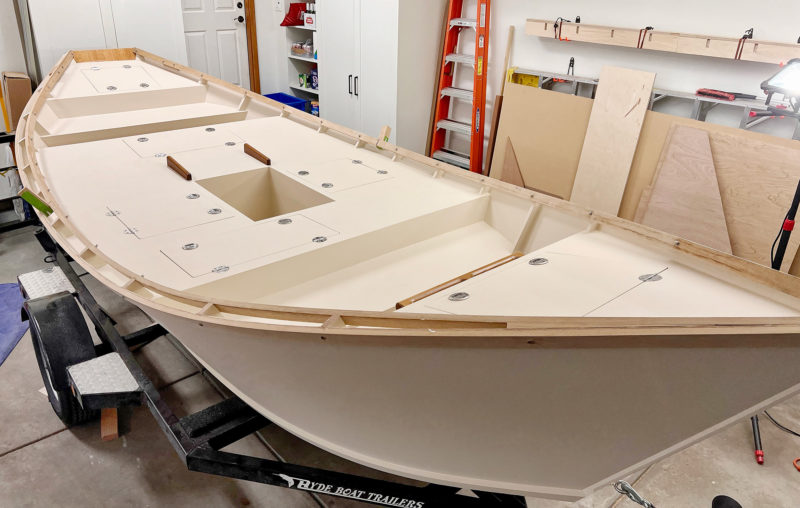 Jeff Battin
Jeff Battin
Join The Conversation
We welcome your comments about this article. To include a photo with your remarks, click Choose File below the Comment box.


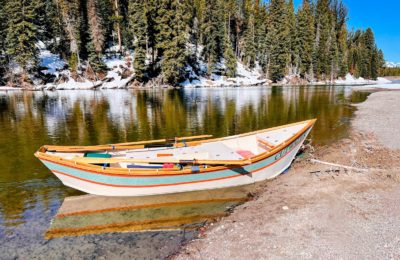
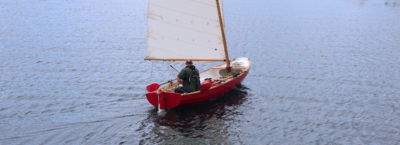
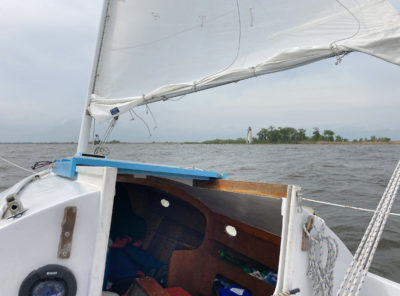
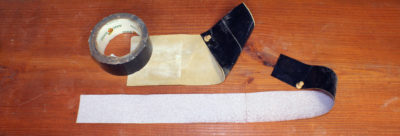
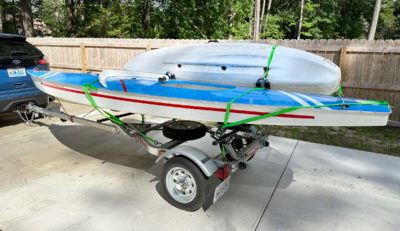
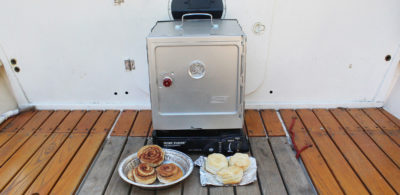
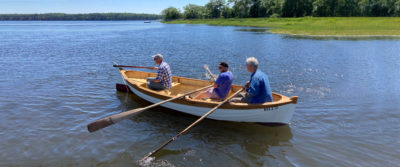
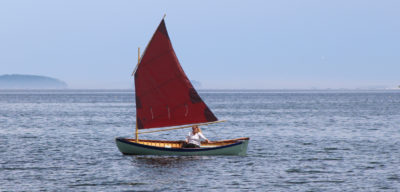
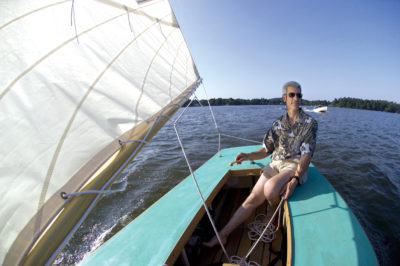
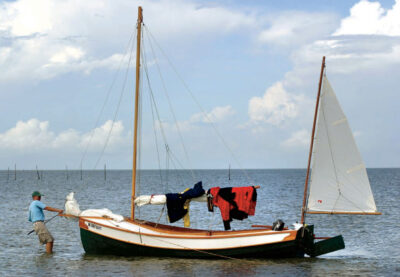
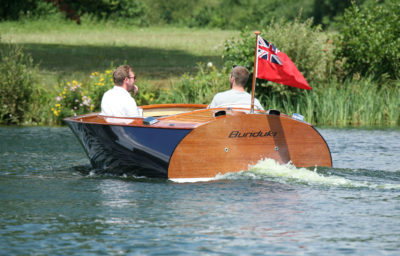
It’s a beautiful boat. I was part of Brad Dimmock’ s ( now instructing at the Wooden Boat School) workshop at his place in Flagstaff. In 2018 I am the owner of that Briggs GC dory now and have floated this same section. They are amazing river boats with a wonderful history in the west. I really enjoyed your narrative of the build. Just down the road in Colorado Springs, btw.
Thank you!
I have always enjoyed Dory Designs. As a designer myself, I do not think my brain would stretch far enough to elaborate my topside the way this dory has been designed, but hats off to this designer. I have not read the article but see no reason even on the Colorado River to doubt this sweetheart dory could or would be swamped by water remaining on board. She is perfect! I want one! In the week to come as I read and consume this article I will invest in her plans and plan out a journey from the Snake River to the Columbia River to the Pacific Ocean. Wish me well. I have personal experience in design and construction of wooden boats. This one is a favorite. Thank you.
There is a boat I would like to know more about.
I have what I believe to be “Waterbug” made by R. Hamann & Son in Carmel, NY.
Found an ad in a 1961 copy of Boating magazine.
I am hoping to resurrect her this winter for my 5-year-old nephew but do not know about the sail (41 sq ft) or how it was rigged.
Any info is appreciated.
Thanks for your help.
When building from free plans you get what you paid for. The pinch and hog between frame five and seven is typical of free plans. I have built many models from free plans. I have found almost all free plans to have dimensions altered from the original design. The results are always a difficult build to plan and poor design performance. I have seen multiple builds by free plan drawings. All were costly mistakes. Before the investment of time and expense of building a boat. THE “LEAST” expense is the cost of the original designer prints. False hull lines are a common practice to protect a designers original work. Always build a scale model from suspect prints to reveal design flaws. My practiced eye can see the fault in the hull lines from the drawings in this article. An easy check for prints is to see if a strip of wood will easily bend and naturally form along the print lines. If the task is difficult, the print lines are suspect of an altered print!
I like her a lot!
One observation: you have the nuts (quite a few) on the inside of the inwales. With potentially a lot of tossing around, shouldn’t you put these rather on the outside?
Thanks! We used acorn cap nuts on the carriage bolts inboard so there are no sharp edges or potential snags.